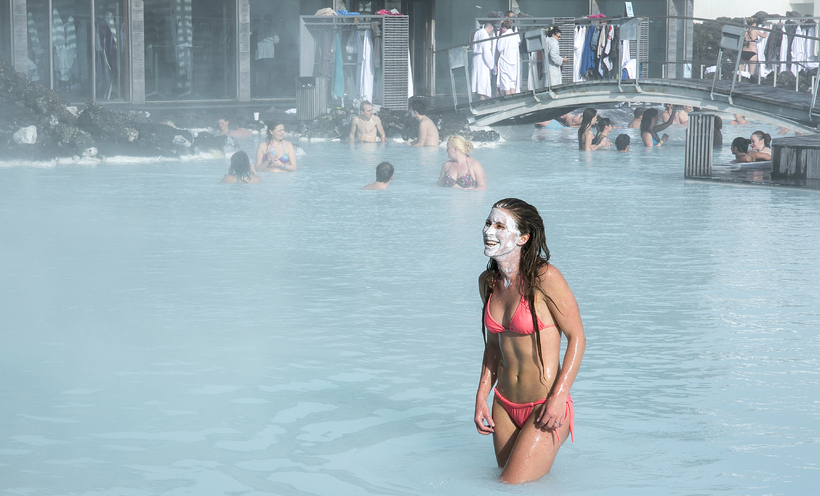Þjófafoss on the Þjorsá is a lovely spot, rich in wildflowers, lichen and wondrous lava blobs under Búrfell and Katla, and then there are the falls, which are stunning.

Historically, this was a green land until 1104, when the volcano Hekla filled it in. After that, it ran as a high rapid in a monumental flow. Now it is a fall. The water of the Þjorsá is diverted away from it to run two power plants. It stands as a warning against becoming too enamoured with “Nature” in Iceland. It is often an industrial product, either as a constructed landscape, the planted forests of the North East …
… or even the great fjord lake, the Lagarfljót, in the East…
Not to mention the Blue Lagoon, which is the outflow from a power plant, too.

There are many more examples. The great black sand beaches of Heraðsandur, for example, with its re-engineered rivers and outflow strewn across the entire East Coast by wind, currents and tides.

This industrialization of landscape raises many questions. If this were happening in Canada, it would be called encroachment on Indigenous space, which it would be. Because there is a myth that there were no people living in Iceland before the Icelanders came in the 9th century, Icelanders can escape that one. There were Irish, and walruses, but someone the Irish don’t count and the walruses are, well, not human, although I don’t see why that should make a difference. We are looking at walrus country without walruses.

Instead of carrying the weight of settler colonialism, which burdens countries like Canada, the United States, Australia and South Africa, Icelanders claim a history of settlement, of claiming and developing wild land in the middle of the Atlantic. It sounds benign, but what it means is the very industrialization of landscape I have described above. Even sheep, all 3,500,000 of them in the country, are industrial, and have turned the country from a birch forest into a desert.
The wind takes over as soon as their hooves cut the sod.

Iceland markets itself as pristine nature now:

And that’s the other side of this story. Wonderful places like the Lagarfljót, Heraðsandur and the Jökulsárlón are embedded in a story of global climate change, melting glaciers and eroding dunes. So much of what there is to see in Iceland is of this process. It doesn’t make it less beautiful, but it does make it fraught. It’s not pristine nature that one views in Iceland, so much as nature’s reaction to human industrialization, often by visitors who are a vital part of that industrialization. Nature is, pure and simple, an industrial product in Iceland. It is still wonderfully beautiful, but it is more an image of technology for a technological people than it is a land in and of itself. Even this blog, after all, is a technological product.




We humans do our best to live with nature in mind. We are intertwined.
Nature is not benign. What a marvel of power it is!
Cleared, like the Scottish Highlands:(